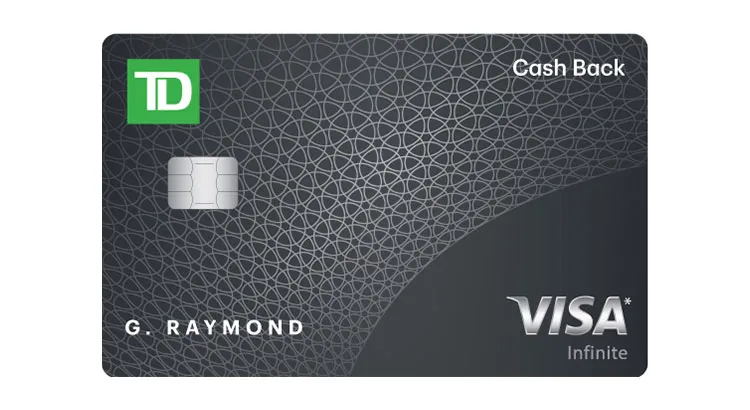Advantages and disadvantages of no annual fee credit cards

Understanding No Annual Fee Credit Cards
No annual fee credit cards can be an appealing choice for many Canadians. They offer the ability to build credit without the burden of yearly charges. However, like any financial product, they come with both advantages and disadvantages. Understanding these factors can help you make informed decisions that align with your financial goals.
Advantages
- Cost-saving potential: One of the primary benefits of no annual fee credit cards is the potential for significant savings. For instance, if a typical annual fee is around $120, you effectively save that amount each year by selecting a no-fee option. This is especially beneficial for those who may not use their credit card frequently, as it allows them to avoid unnecessary expenses.
- Flexible spending: No annual fee cards provide users with flexibility. You can use your card without the pressure of justifying an annual cost. This means you can pay for occasional purchases, like groceries or gas, without worrying about whether you’re getting value from the fee annually.
- Access to rewards: Many no annual fee credit cards offer rewards programs similar to their fee-based counterparts. For example, you might find cards that provide cashback on specific categories like groceries or dining out. Some cards even offer points that can be redeemed for travel, merchandise, or gift cards, making them quite competitive in the market.
Disadvantages
- Limited perks: While no annual fee cards are budget-friendly, they often lack premium benefits found with more expensive cards. Features such as travel insurance, purchase protection, or extended warranties are generally absent, which might be a drawback for frequent travelers or big spenders looking for added security.
- Higher interest rates: It’s important to note that some no annual fee cards may charge higher interest rates on outstanding balances. For example, if you carry a balance, you could incur more charges than if you had a card with a lower interest rate, which could negate the savings from avoiding the annual fee.
- Restrictive credit limits: Typically, no annual fee credit cards come with lower credit limits compared to premium options. This could affect your purchasing power, especially if you intend to make large purchases or would like to maintain a lower credit utilization ratio for your credit score.
In conclusion, deciding whether a no annual fee credit card is right for you involves weighing these factors carefully. For occasional users or those focused on building credit without the burden of annual fees, these cards can be a great fit. However, for those who travel frequently or seek premium benefits, it may be worthwhile to explore cards that may charge an annual fee but offer better perks. Understanding both sides is essential to making an informed decision that aligns with your financial goals.
Weighing the Pros and Cons
When contemplating a no annual fee credit card, it’s essential to understand the specific advantages that can work in your favor. The benefits often stand out, making these cards a popular choice among consumers. However, it is equally important to recognize the potential drawbacks that might make them less suitable for some individuals.
Advantages
- Cost-saving potential: One of the primary advantages of no annual fee credit cards is the opportunity for substantial savings. Many traditional credit cards charge an annual fee, which can range anywhere from $50 to $150. By opting for a no-fee card, you can keep that money in your pocket. For example, if you choose a card without an annual fee, you could save up to $120 over the course of a year, which can certainly add up over time.
- Flexible spending: Unlike credit cards that charge annual fees, no annual fee cards offer some flexibility regarding usage. This means you can make occasional purchases—like back-to-school supplies or new appliances—without feeling pressured to justify spending a set amount each year. This flexibility is particularly advantageous for individuals who do not rely heavily on credit for their daily expenses.
- Access to rewards: Interestingly, many no annual fee credit cards come equipped with rewards programs that can compete with those offered by higher-fee cards. For instance, you might find a no fee card that gives you 1.5% cashback on all purchases or even increased cashback on specific categories like groceries and restaurants. Some cards might also offer point systems that can be redeemed for travel-related expenses or gift cards, making these options attractive for savvy spenders.
Disadvantages
- Limited perks: While saving on annual fees is appealing, it’s important to note that no annual fee cards often come with fewer perks than their charged counterparts. Features such as travel medical insurance, price protection, or access to exclusive events are typically reserved for cards that require an annual fee. For travelers or consumers who regularly make large purchases, these missing benefits could represent a significant gap in coverage and security.
- Higher interest rates: Another aspect to consider is that some no annual fee credit cards can have higher interest rates. If you happen to carry a balance from month to month, the interest accrued on a higher rate could quickly surpass any savings from not paying an annual fee. For example, if you have a balance of $1,000 with an interest rate of 20%, you could end up paying $200 in interest over the year, negating any savings from avoiding the fee.
- Restrictive credit limits: It is not uncommon for no annual fee credit cards to have lower credit limits compared to premium cards. This could limit your purchasing power, especially in emergencies or when you wish to make larger purchases. Lower credit limits can also impact your credit utilization ratio, which is an important aspect of your overall credit score.
Ultimately, as you weigh these advantages and disadvantages, consider your spending habits and financial goals. While no annual fee credit cards may be perfect for casual users looking to build credit without incurring costs, those who often travel or seek premium benefits should investigate whether a card with an annual fee might ultimately better serve their needs.
Understanding the Trade-offs
As we continue to delve into the discussion of no annual fee credit cards, it becomes evident that there are several additional factors to consider. While you’ve learned about savings and flexibility on one hand, there are further nuances in terms of how these cards perform under different circumstances.
Additional Advantages
- Easy acceptance for new users: No annual fee credit cards are often seen as more accessible for consumers who are new to credit. Banks tend to be more lenient with applications for these cards, making it easier for individuals with a limited credit history or those just starting out in their financial journey to obtain one. For students or recent graduates, this can be a wonderful first step in building credit without the burden of annual fees.
- Budget-friendly options: Many no annual fee cards come with features that are tailored to help consumers manage their finances better. For instance, some cards offer budgeting tools within their mobile apps, which can assist users in tracking their spending and staying within set limits. This can foster responsible spending habits and prevent debt accumulation.
- Cash flow management: Choosing a no annual fee credit card allows consumers to manage cash flow more effectively. When an unexpected expense arises, having a credit card without the added pressure of an annual fee can give you flexibility, enabling you to handle emergency situations without further financial strain.
Additional Disadvantages
- Limited bonus offers: Many no annual fee credit cards may not provide enticing sign-up bonuses that are sometimes offered by premium cards with annual fees. A typical premium card might offer a generous welcome bonus of points or cash back after meeting a minimum spend requirement, which could greatly enhance its value during your first year. In contrast, no-fee options tend to have less competitive bonus structures, which might leave potential rewards unfulfilled.
- No introductory offers: Some higher-fee credit cards come with low or zero interest rates for an introductory period. This can be a game changer for making larger purchases without incurring immediate interest. Unfortunately, most no annual fee cards lack such compelling offers, which could be a disadvantage for consumers looking to finance purchases over a few months while avoiding interest.
- Potential for lesser customer service: When it comes to no annual fee credit cards, customer service can sometimes take a hit. Cards with annual fees frequently come with dedicated customer service lines or account managers, offering priority assistance. Conversely, no annual fee cards may provide standard customer support, putting you in a queue during busy times, which can be frustrating if you require immediate help.
Balancing these added dimensions of benefits and drawbacks can help you make a more informed decision about whether a no annual fee credit card aligns with your financial habits and goals. Understanding these aspects can empower you and lead to a selection that best suits your needs, ensuring your credit journey is not just financially wise but also enriching.
Conclusion
In summary, no annual fee credit cards offer a compelling option for consumers looking to manage their finances without incurring extra costs. Their accessibility makes them especially appealing for new users, such as students or those entering the workforce, as they can help establish a credit history without the burden of an annual fee. Furthermore, features like budgeting tools and manageable cash flow highlight their overall value in promoting responsible financial habits.
However, it’s essential to weigh these benefits against the potential drawbacks. Many no annual fee cards often come with limited rewards and fewer enticing promotional offers, which could be a missed opportunity for individuals who prefer to maximize credit card perks. Additionally, customers might experience less personalized service compared to premium cards that charge an annual fee, which could lessen the overall experience when assistance is needed.
When considering whether a no annual fee credit card is right for you, assessing your individual spending habits and financial goals is crucial. For some, the savings from not paying an annual fee outweigh the missed bonuses and lower service levels. Others may find that premium cards, despite their costs, provide unmatched benefits that align better with their spending patterns. Ultimately, the choice lies in understanding your unique needs and how a no annual fee credit card can fit into your broader financial strategy. By carefully evaluating these factors, you can make a well-informed decision that positions you for financial success.

Linda Carter is a writer and financial consultant specializing in economics, personal finance, and investment strategies. With years of experience helping individuals and businesses make complex financial decisions, Linda provides practical analyses and guidance on the World Information Now platform. Her goal is to empower readers with the knowledge needed to achieve financial success.






